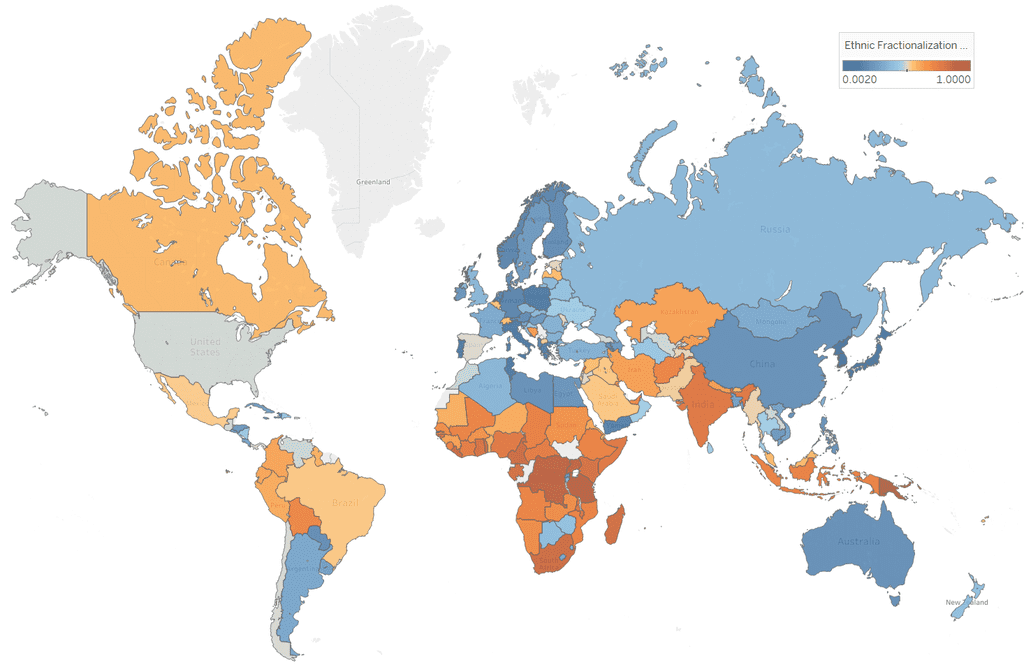Diversity Reporting is a relatively new trend in the financial world. It’s becoming more and more popular, with many companies around the world starting to include it as part of their regular reporting process. There are several different ways that organizations can go about diversity reporting, but they all have one purpose: to measure the demographic makeup of an organization as a whole. This includes factors such as race, gender, disability status, and others. The goal is simple – by measuring these demographics for your company or organization you can see if any employees are being treated unfairly because of who they are or what they represent. If you want to learn how Diversity, Equity, and Inclusion work, so that you can better understand if your company is treating all of its employees fairly, then keep reading.
- What is the Purpose of Diversity Reporting?
- Why is Diversity Reporting Important?
- Who Should Report on Diversity?
- How Do You Measure Diversity?
- What is ESG?
- Are ESG and diversity reporting the same?
- What are the Implications of Diversity Reporting?
- What is the Difference Between Diversity Reporting and Inclusion?
- What does D&I mean?
What is the Purpose of Diversity Reporting?
The goal of diversity reporting is to give a snapshot of how well or poorly companies are treating all of their employees, regardless of who they are or where they come from. Sometimes people have different experiences at work based on factors such as race, gender, sexuality, and so on. When there is an imbalance in these factors, real or perceived, it’s possible that some employees will feel discriminated against or treated unfairly because of who they are. To combat this problem, diversity reporting allows employees to provide evidence of any unfair treatment by examining how large each demographic group is within the organization as a whole.
Why is Diversity Reporting Important?
By having a diversity report, employees can understand if their company is treating everyone equally or not. This will give anyone who feels they have been discriminated against evidence to back up their claims so that others can be made aware of the situation. If an organization isn’t providing diversity reports, it can put them at risk for lawsuits and other problems down the road related to unfair treatment due to race, gender, or other reasons. This is why so many organizations are deciding whether they should start including diversity reporting in their regular reporting process.
Who Should Report on Diversity?
Since diversity reporting is included in regular reporting, it’s important that the person who does the reports – like an external consultant or expert – can provide neutral insight. This way, people will be more likely to trust their findings and act accordingly if they feel there has been unfair treatment in some capacity. By having someone who is able to provide unbiased information on the demographic makeup of the organization, you can understand if your company is treating everyone fairly or not.
How Do You Measure Diversity?
Diversity reporting measures three main factors: race, gender, and disability status. There are different ways that these can be measured depending on what information you have available for your company, but it’s important to make sure that all demographics are included before you take any action. For example, if an organization has plenty of employees who are white then they should include that in the diversity report so that people understand what percentage of their workforce comes from different backgrounds.
What is ESG?
ESG stands for Environment, Social, and Governance. It’s becoming more and more popular in the financial world because investors want to know that the companies in their investment portfolio have responsible management teams that care about all of their employees. In a way, this means that companies will likely receive better returns on investment, among other benefits, for creating diversity reports and having a diverse workforce.
Are ESG and diversity reporting the same?
ESG and diversity reporting are similar in that they both aim to provide insight into how well companies are treating all of their employees. Since ESG is a larger idea, it’s usually backed up by more factors than Diversity Reporting. However, diversity reporting is often used in conjunction with ESG reporting because it provides an easy way for investors and others to see how a company is doing in terms of diversity.
Why should companies report on ESG?
Many people who invest in a company want to feel that they are supporting one that has strong values and ethics, not one that treats its employees unfairly. By providing insights into diversity reporting, you can make it far more likely for investors or other companies to trust in your company and what it’s doing. This isn’t just good for the reputation of your organization, but can also lead to benefits such as funding, which is why so many companies are beginning to report on ESG and diversity at the same time.

What is the First STEP?
The first STEP stands for Statistics for Test Evaluation and Review Technique. It is a common model that measures diversity by looking at the demographic makeup of an organization as a whole, including race, gender, and disability status among others. However, it’s important to note that it doesn’t include organizational culture or individual behavior. This means that First Steps can be useful if you are working to change the organizational culture of your company, but it doesn’t provide all the information that most people want in a diversity report.
What are the Implications of Diversity Reporting?
Even though there are many types of diversity reporting, they all have one purpose: to try and make sure that all employees feel like they are being treated fairly. This is especially important in businesses where decisions are made based on metrics such as gender or race because it’s possible for some people to be discriminated against. By having a diversity report, employees can understand how well or poorly their company is treating others and try to improve things where needed.
What is the Difference Between Diversity Reporting and Inclusion?
Diversity reporting and inclusion are two different things although they are often used together as part of diversity initiatives. Inclusion refers to making sure that everyone feels welcome and supported within an organization. Inclusion has to do with how well people from different backgrounds feel that they are a part of a company or organization. This could be based on things such as race, gender, sexual orientation, or socioeconomic status. Diversity reporting is geared towards making all employees feel equally treated regardless of who they are while inclusion focuses on making sure that everyone feels welcome.
Who is it Important for?
While diversity reporting may not be important to all organizations, there are some groups of people who will get the most out of it. If you belong to a minority group or have experienced discrimination based on your identity or culture then diversity reporting will give you valuable information on how well your company is treating each employee. It’s important to realize that diversity reporting isn’t perfect, but it can certainly help.
What are Some Examples of Diversity Reporting?
There are many different ways organizations can go about creating a diversity report, but they all model themselves after the same idea. Organizations must collect data on how many people are in each demographic group and then compare it to the overall composition of the organization. A few examples might include comparing the number of women to men or comparing the zip codes of employees with the location of the company itself. No matter which form you use it’s important that each form gives a distinct snapshot into how well your organization treats each employee.

What is the SAP sustainability?
The SAP Sustainability is a global initiative that aims to improve economic, environmental, and social outcomes for partners and the communities in which they operate. SAP believes that sustainability is a driver for business growth and competitive advantage.
How does SAP help in sustainability?
The notion of corporate responsibility has evolved over the years with increasing pressures from society, shareholders, stakeholders, and governments. The idea of corporate responsibility has also become more widespread with the growing interest in the triple bottom line (people, planet, profit) approach.
The SAP Sustainability focuses on global market trends as well as social and environmental issues that include climate change, water scarcity, transparency, and corruption. In addition to this work, it is also supporting the 17 Global Goals of the United Nations.
What does D&I mean?
D&I stands for Diversity and Inclusion. It is also a short form for DEI which stands for Diversity, Equity, and Inclusion. These two are different in that Diversity and Inclusion focuses more on promoting diversity and equality throughout the organization, while Equity and Inclusion also looks at disabilities.
Diversity is “the state of having people who are different races or who have different cultures in a group or organization”. It has to do with all sorts of differences such as color of skin, gender, or religion.
Is D&I part of ESG?
Diversity Reporting is considered part of ESG, or Environmental, Social, and Governance. It falls under the Social heading.
What does D&I reporting measure?
Diversity reports measure “demographic characteristics such as age, race/ethnicity, gender/sex (cisgender vs. transgender), sexual orientation, disability status, socioeconomic background, and religious affiliation”. They also look at how these characteristics affect people within the company. For example, if men are more likely to be promoted than women, this would be seen as a problem in terms of equality.
What is the most diverse company?
Examples of companies with great diversity include PepsiCo which has three women on their board of directors, Apple which has two Asian men as co-founders, and Nike Inc. which emphasizes diversity across the organization through hiring practices.
What are some of the benefits of D&I?
Diversity helps companies have a wider range of perspectives, which makes them more innovative and creative. It also means that they can cover more market space, thus being able to better reach their target audience(s). This in turn could result
In conclusion an inclusion transparency report
In conclusion, we learned that Diversity makes companies more innovative and creative. It also means that they can cover more market space which could help them reach their target audience(s). Diversity reporting is a trend growing in popularity and it is part of ESG (Environmental, Social, and Governance) under the social heading. Having a Diversity Report can help organizations in many ways, but not having one may be hurting your triple bottom line.
Caveats, disclaimers, employee resource groups & gender diversity
We have covered many topics in this article and want to be clear that any reference to, or mention of gender diversity, separate legal entity, inclusion transparency report, diversity winners reveals, accountability, (Double Declining Balance Method), success, confidence, representation, transparency, technical, customers, forward, identify, closer look, careers or women in the context of this article is purely for informational purposes and not to be misconstrued with investment advice or personal opinion. Thank you for reading, We hope that you found this article useful in your quest to understand ESG.
You might also want to read…
What is CPACC to Disability and Accessibility in Canada?
WCAG 2.0 Web Accessibility Guidelines
What is the Canadian Index of Wellbeing?
How to Eliminate Accessibility Barriers Online
How is the IAAP Advancing Accessibility for Canadians?

Dean Emerick is a curator on sustainability issues with ESG The Report, an online resource for SMEs and Investment professionals focusing on ESG principles. Their primary goal is to help middle-market companies automate Impact Reporting with ESG Software. Leveraging the power of AI, machine learning, and AWS to transition to a sustainable business model. Serving clients in the United States, Canada, UK, Europe, and the global community. If you want to get started, don’t forget to Get the Checklist! ✅
